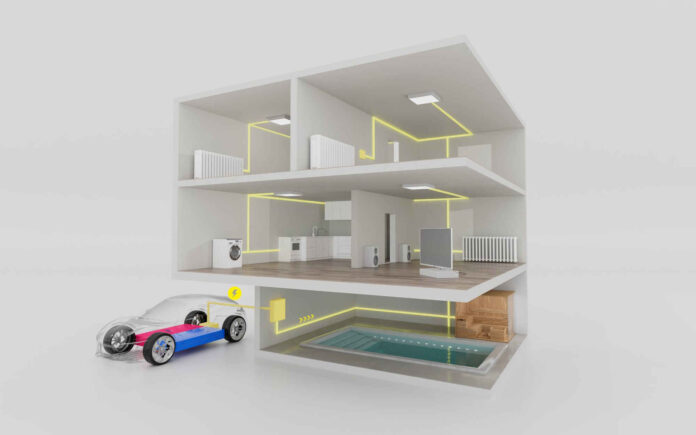
nanoFlowcell can deliver electromobility
Electromobility, or the use of electric vehicles (EVs) for transportation, is widely regarded as a key solution to reduce greenhouse gas emissions, improve air quality, and enhance energy security.
However, current EVs face several challenges, such as limited driving range, high battery cost and weight, long charging time, and environmental impact of battery production and disposal.
To overcome these limitations, a novel concept of flow energy has been proposed by nanoFlowcell, a Swiss company that develops flow cell battery technology.
Flow energy is the energy stored and released by a liquid electrolyte that flows through a flow cell, where a chemical reaction occurs between two different electrolytes separated by a membrane.
The electrolyte, called bi-ION, is composed of water, salts, and specially designed molecules that act as charge carriers. The bi-ION electrolyte has a high energy density, low cost, and is non-toxic and environmentally friendly.
The flow energy can be used to power electric motors for EVs, as well as other applications that require mobile energy.
nanoFlow Cell Battery Technology
A flow cell battery is a type of rechargeable battery that uses liquid electrolytes to store and deliver electrical energy.
Unlike conventional batteries, where the electrodes and the electrolyte are contained in a single unit, a flow cell battery has two separate tanks of electrolytes that are pumped through a flow cell, where the electrochemical reaction takes place.
The flow cell consists of two electrodes, a membrane, and an external circuit. The membrane allows the transfer of electrically charged subatomic particles, called ions, between the two electrolytes, but prevents them from mixing.
The ions move from the electrolyte with higher concentration of charge carriers (anolyte) to the one with lower concentration (catholyte), creating an electric potential difference between the electrodes.
This potential difference drives the electrons to flow through the external circuit, generating an electric current. The flow rate of the electrolytes determines the power output of the battery, while the volume of the electrolytes determines the energy capacity.
The advantage of a flow cell battery is that it can be recharged by replacing the depleted electrolytes with fresh ones, which can be done quickly and easily at a refueling station. The flow cell battery also has a long cycle life, as the electrodes do not degrade over time.
nanoFlowcell’s Flow Cell Battery Technology
nanoFlowcell is a company that has developed a unique flow cell battery technology, based on nanotechnology and quantum chemistry. The company claims that its flow cell battery has several advantages over conventional flow cell batteries, such as higher energy density, lower cost, and better environmental compatibility.
The key innovation of nanoFlowcell’s technology is the bi-ION electrolyte, which is composed of water, salts, and specially designed molecules that act as charge carriers.
The bi-ION electrolyte has an energy density of 600 Wh per litre, which is ten times higher than conventional flow cell electrolytes, and comparable to lithium-ion batteries.
The bi-ION electrolyte is also non-flammable, non-explosive, non-corrosive, and biodegradable, making it safe and eco-friendly. The bi-ION electrolyte can be produced from renewable sources, such as solar, wind, or hydro power, and can be distributed through existing fuel infrastructure.
The cost of the bi-ION electrolyte is estimated to be below 10 cents per liter, which is much lower than gasoline or diesel. The nanoFlowcell’s flow cell battery technology can be used to power electric motors for EVs, as well as other applications that require mobile energy.
The company has demonstrated its technology in several prototype vehicles, such as the QUANT E, QUANT FE, and Quantino, which have achieved impressive performance and efficiency.
The QUANT FE, for example, is a four-seater sports car that can reach a top speed of 300 km/h, accelerate from 0 to 100 km/h in 2.8 seconds, and have a driving range of over 800 km with a single tank of bi-ION electrolyte.
The Quantino, on the other hand, is a compact city car that can travel up to 1,000 km with a single tank of bi-ION electrolyte, consuming only 12 kWh per 100 km.
Flow energy and its novel concept of sustainability is a challenge
Flow energy is a novel concept for sustainable electromobility, based on the use of liquid electrolytes that store and release electrical energy through a flow cell battery. nanoFlowcell is a company that has developed a unique flow cell battery technology, using a proprietary bi-ION electrolyte that has a high energy density, low cost, and is non-toxic and environmentally friendly.
The company has shown the feasibility and potential of its technology in several prototype vehicles, which have achieved remarkable performance and efficiency.
Flow energy could be a game-changer for the future of electromobility, as it could offer a clean, safe, and affordable alternative to fossil fuels and conventional batteries.



